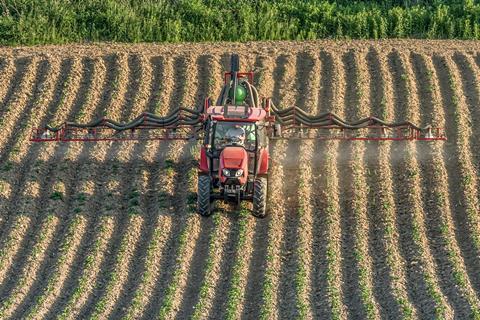Guide shows that almost 60 per cent of the ‘Clean Fifteen’ products are free from harmful pesticide

The Environmental Working Group (EWG) has launched its latest Shoppers Guide to Pesticides in Produce, revealing that almost 60 per cent of samples of conventionally grown fruit and vegetables on its ’Clean Fifteen’ list had no detectable pesticide residues.
Conversely, EWG said that more than nine in ten samples of conventional, or non-organic, produce on the guide’s ‘Dirty Dozen’ list contained residues of potentially harmful pesticides.
Exposure to some pesticides is linked to health problems, including harm to the nervous system and even cancer, the group noted.
“EWG’s Shopper’s Guide is a tool to inform consumers and help them with their produce shopping choices, with the goal of everyone eating more fruits and vegetables” said EWG vice president for science Alexis Temkin.
“For people looking to reduce pesticide exposure, buying from the Clean Fifteen is a great place to start.”
The Shopper’s Guide, which EWG releases every year, looks at Department of Agriculture data to review pesticide residues on many popular fruits and vegetables.
The guide includes the Clean Fifteen list, representing those items with the least amount of pesticide residue, and the Dirty Dozen, produce that has the highest residue.
New methodology
EWG said it updated the methodology used for this Shopper’s Guide to reflect pesticides’ toxicity – their ability to cause harm – in addition to their detected frequency and concentrations.
The updated methodology considers more incisively than in years past which pesticides might be on produce, including which could be the most harmful.
“By incorporating pesticide toxicity into our rankings, we give shoppers a more complete picture of what’s on their produce,” said Varun Subramaniam, EWG associate scientist.
“This means we’re not only flagging produce with the most pesticides, we’re also highlighting those with potential health hazards.”
The overall toxicity is one of four factors EWG used to assess pesticides on produce.
To calculate the overall pesticide toxicity for produce, EWG compared the average concentration of pesticide detected on fruits and vegetables to toxicological reference values – levels below which health harms are not expected.
“The updated methodology reflects important aspects of pesticide exposure for people,” said Dayna de Montagnac, EWG associate scientist.
“Our research takes into account the potency of each chemical and can help shoppers reduce their overall pesticide burden.”
New to the Clean Fifteen
EWG said that, Oo average, pesticides detected on produce on the Clean Fifteen had ”significantly lower” overall toxicity than those items on the Dirty Dozen list.
Bananas and cauliflower joined this year’s Clean Fifteen for this reason.
“This is good news for parents, since bananas are a staple ingredient in the diets of babies and toddlers,” the group noted.
Other Clean Fifteen standouts included avocados, papaya, pineapple and onions.
The Dirty Dozen
Blackberries and potatoes made this year’s Dirty Dozen, EWG explained, based on the USDA’s first-time tests of blackberries, which found 93 per cent of samples had pesticide residues for an average of four different pesticides per sample.
The pesticide cypermethrin, classified as a possible human carcinogen by the Environmental Protection Agency, was detected on just over half of conventional blackberry samples, it said,
For potatoes, new USDA data revealed that 90 per cent of samples contained chlorpropham, a sprout inhibitor used post-harvest.
The European Union banned use of the chemical in 2019 due to health concerns for both farmers and consumers.
In total, more than 50 different pesticides were found on samples from each of the Dirty Dozen fruits and vegetables, except for cherries.
Every commodity except potatoes had on average four or more pesticides detected on individual samples.
Eat more fruits and vegetables
The American Academy of Pediatrics recommends that parents who are concerned about their children’s pesticide exposure consult EWG’s Shopper’s Guide.
“Everyone should eat more fruits and vegetables – organic or conventional,” said EWG Senior Scientist Alexa Friedman.
“But for those who want to reduce their exposure to pesticides, the Shopper’s Guide can be a powerful tool to avoid consuming potentially harmful chemicals.”
The 2025 guide analysed pesticide residue data from USDA tests of more than 53,000 samples of 47 fruits and vegetables.
Before testing, produce samples were washed, scrubbed or peeled, as is typical for each types of produce
Even after these steps, pesticide residues were still detected – but washing fruits and vegetables remained an important step to reduce pesticide levels, dirt, and possible bacterial contamination, EWG noted.
“EWG recommends shoppers seeking fresh produce with low pesticide residues buy organic versions of items on EWG’s Dirty Dozen and either organic or conventional versions of produce on the Clean Fifteen,” said Friedman.
“There are also many organic and Clean Fifteen options in the frozen food aisle.”



